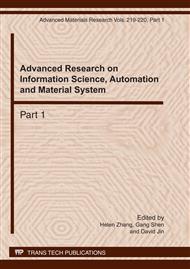p.1647
p.1652
p.1656
p.1660
p.1664
p.1670
p.1675
p.1679
p.1683
Research on Confidentiality about Provenance Based on Logical Key Hierarchy
Abstract:
By analysing the security needs and the threat model of data provenance, a Key distribution algorithm based on Logical Key Hierarchy(LKH) is brought forward aiming at the confidentiality of provenance. In this paper, we make use of the LKH tree to reduce the storage of the keys for session encryption keys(SEK) of provenance records and decrease the transmission overhead of the provenance chains, which meet the requirement of compressing provenance chains, and then propose the method of dynamic expansion number of auditors that works out the problem of the auditors number dynamic changes existing in the safety requirements for confidentiality of provenance records.
Info:
Periodical:
Pages:
1664-1669
Citation:
Online since:
March 2011
Authors:
Price:
Сopyright:
© 2011 Trans Tech Publications Ltd. All Rights Reserved
Share:
Citation:


